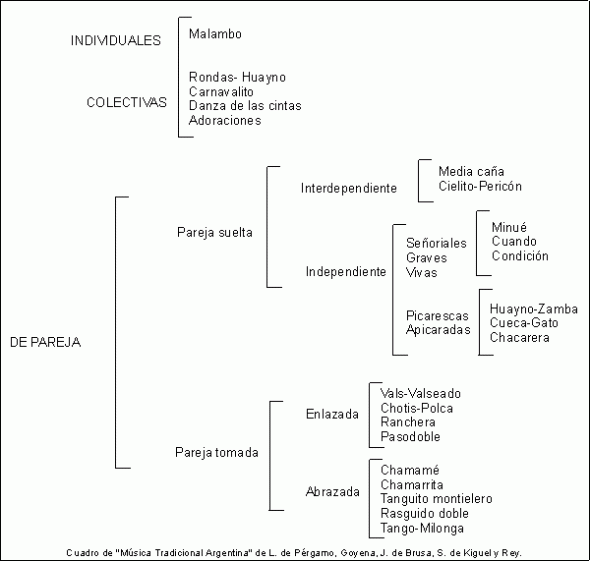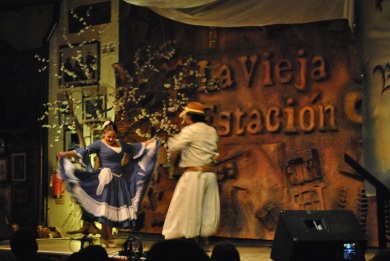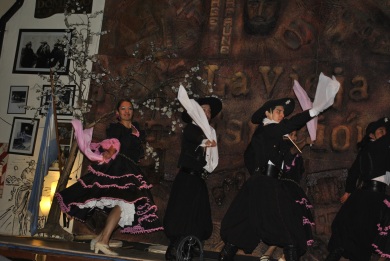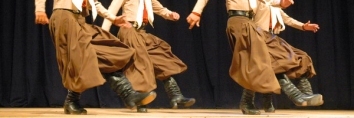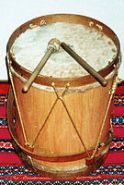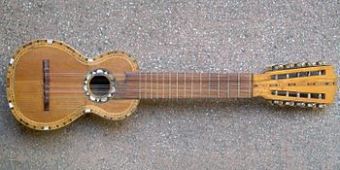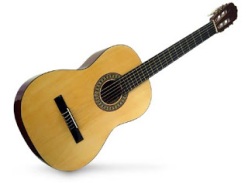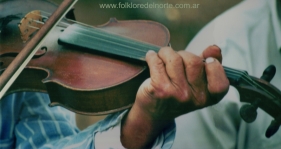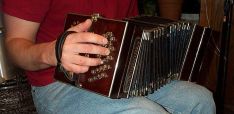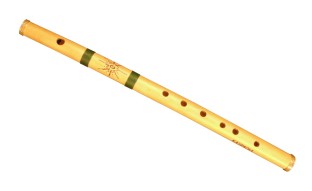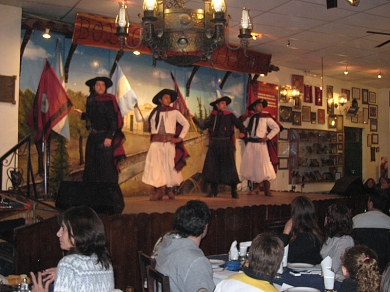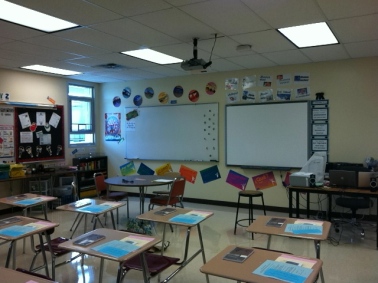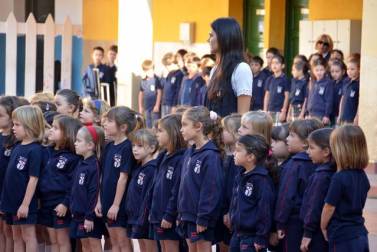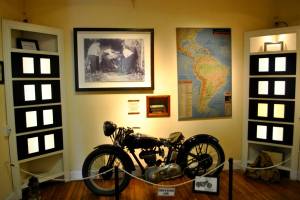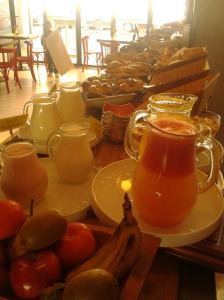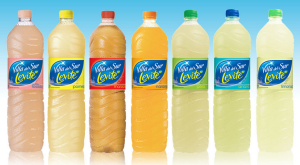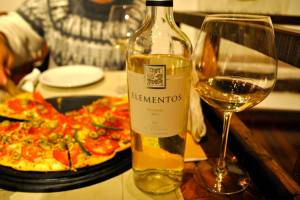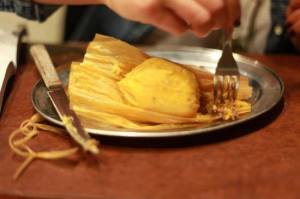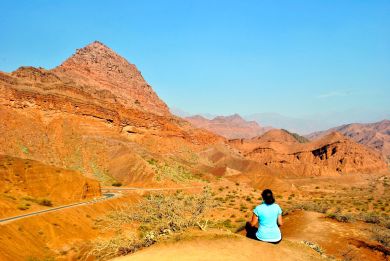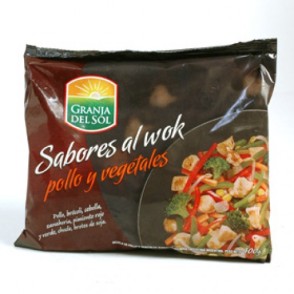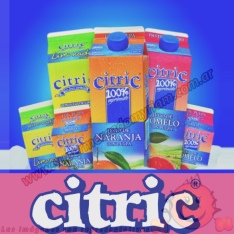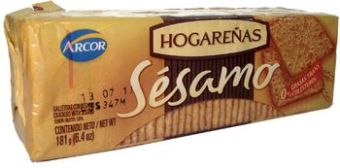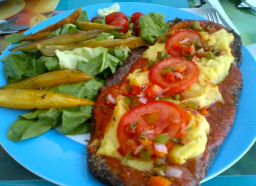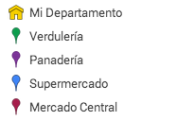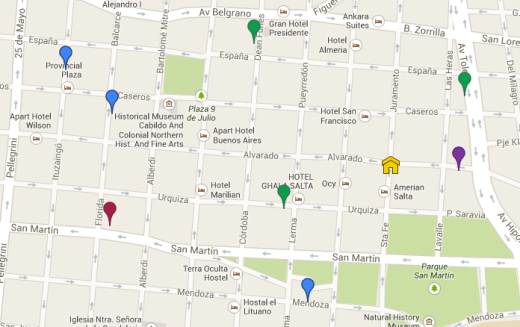As a last requirement of my scholarship, I spent a lot of time in the past week reflecting on my Rotary experience over the past 10 months. Here are links to my final reports in English and Spanish, and the English one includes my evaluation of the Rotary Ambassadorial Scholarship.
FOLKLORE!
When I first got here, a lot salteños asked me if I liked “folklore.”
If you say you like “folk music” in Wisconsin I’m pretty sure this is how people would look at you:
But here, folklore is king. There are radio stations devoted just to folklore. Huge festivals, one coming up next weekend that is literally all day Saturday and Sunday. Many bars and restaurants that only play folklore/are dedicated to bands and dancers performing folklore. Dance studios specializing in folklore. School gym classes teaching folklore. So on and so forth.
Listen to this song while you read 🙂
There are a couple of different types of folklore rhythms/tunes in NW Argentina. There’s also a “nueva generación” or new generation of folklore — this isn’t just something that was produced in the 1950s and left behind, it’s still REALLY popular here. In fact, I think it can be argued that you cannot live in Salta without having an everyday encounter with folklore.
There are a LOT of different types of specific dances/rhythms. The following graphic shows those in ALL of Argentina:
I am only going to focus on three, la chacarera, el gato, and la zamba, because they’re the most popular and common here.
La Chacarera
La chacarera‘s origin is more or less unknown, but most people say that it started in Santiago del Estero, a province about 5.5 hours southeast of Salta. It’s always done in partner (male-female) and the dance is very flirty – the guy is trying to get the girl, but the girl doesn’t want the guy. The dance is basically based on the idea of “avance y retroceso,” or going forward and then pulling back. It’s made up of four steps, and there are two major parts: the first is identical to the second, but you have to get back to the beginning position at the very end (the man walks the woman back to her place).
El Gato
El gato has been danced in Perú, Chile, Uruguay and Paraguay, but it gained most popularity in Argentina. It has very simple choreography, so it is well-known and danced everywhere in this part of Argentina. This dance is also based on courtship/flirting. It’s always danced in partners (male-female) but it’s very independent – they never touch. The gato is very lively. The gato uses casteñetas or just snapping, especially at the beginning.
La Zamba
La zamba is the most difficult of all three dances. It started in Chile or possibly Perú, and it’s basically choreography that has characteristics of a poem. It synthesizes all of the “falling in love process” that a man “aspires to complete as an essential function of his life” (Seriously, that’s the description of this dance. Yes, this part of Argentina is still pretty macho). It is a much slower dance than the gato and the chacarera.
In all three, “palmas” are very important – clapping to the beat. This is because at the beginning of the song, the dancers and musicians are trying to get more people up to dance, so they clap to invite people up!
Dress
The dress is absolutely key to folklore. In Salta, it looks something like this:
The woman has a dress with a big skirt, and the man wears a “gaucho” outfit. The boots are the most important – this is because during the dances, he begins to “zapatear” which basically involves a lot of really fast stomping and it looks like they are all going to break their ankles or toes.
It is probably one of the most amazing things I have ever seen.
Instruments
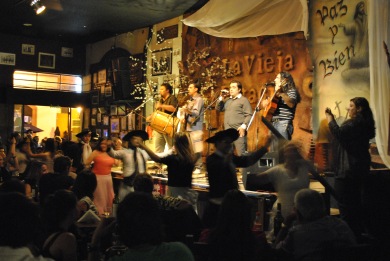 El Bombo (legüero): In the image above from La Vieja Estación, the bombo is the big drum on the left. This instrument is really the key to ANY folklore song (besides the guitar, of course). It has a deep song and controls the rhythm of the song – if the “bombisto” speeds up, so does everyone else.
El Bombo (legüero): In the image above from La Vieja Estación, the bombo is the big drum on the left. This instrument is really the key to ANY folklore song (besides the guitar, of course). It has a deep song and controls the rhythm of the song – if the “bombisto” speeds up, so does everyone else.
El Charango: El charango is a little Andean stringed instrument that is very popular in Perú, Bolivia, and NW Argentina. It typically has 10 strings in five courses of 2 strings each.
La Guitarra: The guitar. Need I say more?
El Violín: Some folklore songs do use the violin, but this isn’t super common.
El Bandoneón: This instrument is mostly in tango, but exists in some characeras and some zambas. It’s kind of like an accordion, but not.
La Flauta: A number of different kinds of flutes exist in folklore. I don’t really know the specifics.
Where and When?
So where do these dances/rhythms come into play here? Everywhere. Like I mentioned above, you will hear them on the radio and there are also specific bars and restaurants dedicated to folklore in Salta. There’s La Vieja Estación, one of the two most famous “peñas” in Salta. Peña is a term dedicated to any establishment where there is live folklore music. This one is very formal, with a big show every night (lots of pictures above).
There’s also Balderrama, which is the oldest peña in Salta.
My personal favorite is up next. There following video is from La Casona del Molina, located in the western part of Salta. Its a huge old house that has tons of rooms with a large patio in the middle. At night, random people come and bring instruments with them, find a place to sit (spread out between all the rooms), and start to play and sing with their friends. It’s great because you can go from room to room, listening, clapping along, singing if you know the words, etc. They stay until 4 or 5 in the morning! I took this video a few weeks ago, when I went with some friends for Clémence’s goodbye party!
A Bailar
I am taking private Spanish lessons with an amazing teacher, Patricia Díaz. My friends Kate and Elijah both take (took, in Kate’s case because she’s no longer in Salta! So sad!) classes with her too, so one Saturday afternoon she organized for us to have folklore dance class with a dance instructor! I was a little bit skeptical but luckily my 10+ years in ballet, jazz, and especially tap helped and now I can say that I can dance “el gato” and “la chacarera.” We didn’t learn “la zamba” because it’s the hardest of all three dances, and we only had a 2-hour class. Thanks to Patricia for organizing this and for taking pictures and videos!
- Learning to “zapatear”
Folklore Today
As for current artists that are really big in Salta? Here they are (with one or two songs that I really like):
- Los Tekis (Que Me Pisen or Pupilas Lejandas)
- Los Nocheros (Por Culpa del Diablo or El Humahuaqueño)
- Abel Pintos (Tiempo or Cactus)
- Gabriel Morales (Pájaro Libre)
- La Banda Coplera (Hay Que Cantar or La Matadora)
- Los Huayra (Si Te Vas)
- Humahuaca Trio (Originario)
There’s also classics like:
- Mercedes Sosa (Antiguos Dueños de las Flechas or Solo Le Pido a Dios)
- Los Chalchaleros (La Cerrillana)
- Los de Salta (Zamba del Regreso)
- Las Voces de Orán (El Que Toca Nunca Baila)
- Los Fronterizos (La Lopez Pereyra)
Tonolec is also worth mentioning, but they are from Formosa (NE Argentina) and sing a really cool mix of electronic music and traditional Toba songs (Toba is the big indigenous group near Formosa). Worth checking out if you like really unique music. I like their version of Antiguos Dueños de las Flechas and Canción de Cuna (Remix).
I hope you learned something new about folklore in NW Argentina!
Kids these days.
I have been working at Colegio Santa María, a private, Catholic, International Baccalaureate (IB) K-12 school in Salta. It is considered one of the best schools in the city because of the IB accreditation, and because it is entirely bilingual. The kids start learning English in Kindergarten, and learning it well. The English teachers are phenomenal and the kids graduate with quite a high language level. I knew very little about education in Argentina before coming here, and decided it would be a great idea to write a post about schools and students here.
The USA
Let’s start with what makes up an average high school in the metro-Milwaukee area, Wisconsin, USA in 2013:
- Each teacher has their classroom, and the students rotate from one room to another as the day goes on.
- Each class period has different students in it.
- Students have lockers.
- Almost all classrooms have some form of technology, whether it be an overhead, a document cam, a SmartBoard with speakers and a mounted projector, 1:1 iPads, etc.
- A computer lab is available for teachers to use with their students
- A cart with a class set of laptops is available for teachers to use with their students.
- The school day is roughly from 7:30/8 am until 2:45/3:30 pm (give or take)
- Lunch is served mid-day. Students can bring lunch from home or buy lunch at school for about $3. If parents cannot afford lunch, they can apply for free/reduced price lunch.
- A full support staff is available with interventionists, a school psychologist, social worker, guidance counselor, teachers trained in interventions, and specialists in emotional/behavioral disorders, learning disabilities, cognitive disabilities, etc.
- If a teacher has an exceptional student in their course, they are legally required to make accommodations, alter assessments, provide different in-class activities, maintain consistent contact with parents and support staff, etc. If not, they are actually breaking the law because these documents (IEPs) are legally binding.
- Students have textbooks that they borrow for the year (and are responsible for), or novels/chapter books, or books on tablets/iPads.
- Teachers have ample space to put their stuff – in filing cabinets and closets in their classroom and often in the “____ department office”
- Schools have wifi (I don’t think this is necessarily the norm right now but it’s becoming more and more common)
- There is a full library with thousands of books – novels, dictionaries, etc.
- Students have a lot of choice when it comes to their schedule, and can pick from business courses, hands-on tasks like graphic design, auto, welding, etc., a variety of art (ceramics, painting, drawing), music (orchestra, band, choir), computer courses (web design, etc)
- For core subjects (math, science, social studies, English), students are in a remedial course, normal course, an honors course, or an Advanced Placement course. This depends on standardized tests grades but also teacher recommendations. There are also schools that offer IB curriculum.
- The school offers a large array of extracurricular activities for students, like student government, business clubs, language clubs, public speaking and debate, a school newspaper, yearbook, drama department, etc.
- The school offers a large array of sporting teams for students, like football, soccer, basketball, cheerleading, dance team, swimming, tennis, baseball, volleyball. If a student is involved in sports, they normally stay at school until 4:30 or 5 PM, if not later.
- The school has these facilities on-campus – soccer fields, baseball fields, a swimming pool, etc.
- Transportation to school for students is provided by the school district. For students with cars, there is a large student parking lot and students pay roughly $150-$200 a year to park at school.
- Teachers are evaluated by administrators, and these administrators may do “walk throughs” or schedule formal observations where they request the lesson plans in advance.
- Teachers need to be available to student questions and parent questions from 7 AM until 9 PM every day, and are expected to respond to e-mails within 24 hours maximum.
- Teachers work all day in the same school, and are normally provided with 1 or sometimes 2 periods of “prep” – time that they do not teach, but is part of their salary, where they plan for lessons and grade assessments.
- Teachers are expected to proctor exams like the practice ACT/SAT, the ACT, SAT, and state assessment (WKCE). Sometimes they are compensated for this, if it takes place outside the normal school day.
- Conferences are held two or three times per year and teachers stay at school until 8:30 or 9 PM. They are not paid extra for this.
- Class size is between 20 and 35, sometimes up to 40 students. 40 is quite rare for suburban schools but relatively common for urban schools.
- Teachers update grades in an online grading system like Infinite Campus or PowerSchool. Students can check this online any time, so they can see their grade on every assessment and their current cumulative grade.
- 80% of a students’ grade is assessment (quizzes and tests).
- If a teacher has 15% of their students failing, it is a huge problem, they will be talked to by an administrator, and it is completely unacceptable. In turn, they offer time before school, during their prep and lunch, and after school for student support. The other strategy is to never enter a 0 in the grade book, and enter 50 instead.
- Department meetings take place every week and school staff meetings either every week or every two weeks (sometimes every month).
- Some private schools require school uniforms. Public schools do not, but they have a dress code (no cleavage, no super short skirts, etc).
- Teachers are paid, on average, about $28,000 to 30,000 their first year teaching. This is $2,333 to $2,500 per month.
- In public schools, parents must pay school fees ($100-$200) and also a fee for each sport the student plays.
- In private schools, parents pay tuition which is about $9,800-$20,000 per year. This is $816-$1,666 per month. ($9,800 at Pius, $11,400 at DSHA, $16,050 at Brookfield Academy, $22,769 for 11th and 12th grade at University School of Milwaukee)
WOAH.
There is a lot to think about there… those are all things any American has pretty much come to expect as “normal” from their high school. If you are reading this and are from the USA, I am hoping you agree with most of those bullet points. Of course, what qualifies as “normal” is going to depend a ton on where you live in America, if the school is urban, suburban, or rural, public or private or charter, etc. But I tried to give a fair summary of what it is like.
Argentina
- The students are divided into groups. They stay in the exact same classroom all day, and the teachers come and go.
- Each class period has the exact same students in it.
- Students do not have lockers.
- Basically no classrooms have any technology. They might have one or two projectors in the school that the teachers can check out. I have never seen a SmartBoard here.
- The very best schools might have a computer lab that is available for teachers to use with their students
- As for laptops, students are given a computer by the Argentinian government (I’m not even kidding). They are netbooks and are plastered with “Presidencia de la Nación” insignia.
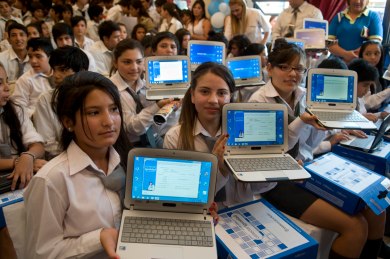
There’s a lot of criticism because people say the president is trying to buy votes by giving laptops to people.
- The school day is divided into “Turno mañana” and “Turno tarde” – morning or afternoon. There are only three schools in Salta that have all-day school, and Colegio Santa María is one of them. At Santa María, they are there from 8 AM to 4 PM. At the other schools kids are there from 8-1 OR 2-6:30 roughly. That’s right, they only go to school for 4.5-5 hours a day.
- Lunch is generally not served at school. Because most schools are only turno mañana or turno tarde, the kids each lunch after school or before school, depending. At Colegio Santa María they DO have lunch, but most kids bring it from home.
- At most schools, there is not a full support staff available. There are a lot of separate schools available for kids with disabilities. Integration into mainstream classes isn’t common here. Also, a lot of things like ADHD and emotional behavioral disorders are not labeled or diagnosed.
- If a teacher has an exceptional student in their course, there are no legally binding accommodations, IEPs, nothing.
- Students get photocopies of textbooks and purchase them. They cost about $7-10.
- Teachers have absolutely no space to put their stuff, because they don’t have their own classroom and there aren’t department offices. Most school buildings are used in the morning, in the afternoon, and again at night by adults getting their GED or something.
- Most schools do not have wifi. Colegio Santa María does (lucky day!)
- Schools have very limited libraries.
- Students have literally NO CHOICE when it comes to their schedule. Because they are in the same room with the same kids all day, they all get the same classes at the same level. That’s right — no electives, no remedial courses, no honors, no AP.
- The school offers a very, very, very limited number of extracurricular activities. Some of the best private schools offer Model United Nations, school plays, etc. But at public schools this is basically nonexistent.
- The school does not usually offer sporting teams for students. If they want to play soccer, they join a soccer club. If they want to swim, they go somewhere that has swimming lessons. If they want to play tennis, they go to a place with a tennis court.
- The best private schools do indeed have soccer fields and whatnot on campus, but this is NOT common.
- Transportation to school for students is not provided. Either parents have to contract “Transporte escolar” through a company, the students take the city bus, or the parents take them there in their car.
- I do not really know about how teachers are evaluated here… I will look into this.
- Teachers only work a few hours a day at a school and then go teach somewhere else. So if a student needs extra help, it is very difficult to even track the teacher down because they are only there a few hours a day and teach the entire time. Prep time is not paid at all.
- There is not a culture of tests here. To get into college, there is no ACT/SAT.
- I do not know about parent/teacher conferences… another thing I will look into.
- Class size is between 20 and 35, sometimes up to 40 students.
- There is no online gradebook system here.
- 80% of a students’ grade is assessment (quizzes and tests).
- It is not uncommon for 30-50% of students to fail. This is normal and totally accepted. Nothing happens to you as a teacher if half your students fail.
- I am not totally sure about department/staff meetings.
- Every single student has a uniform. Look at that netbook picture above. Those are the public school uniforms (I call them doctor coats.). Below are public school uniforms. Students have a “gym” uniform and a regular uniform. The regular uniform is a polo shirt and a skirt for girls (with tights or socks and loaders). Boys have dress pants and a polo. They also have sweaters for when it is cold out. The gym uniform is a t-shirt and sweatpants or shorts. This is worn on the days when they have Phy Ed.
- Teachers are paid, on average, according to this website, $6930 pesos per month in Salta if they work 40 hours per week. This number could be as low as $5000 pesos in some provinces, and as high as $13000 in others. Salta is on the low end of the scale. $6930 pesos is $1172 USD (official conversion) or $815 USD (dolar blue conversion).
- In public schools, parents literally pay nothing except for transportation, school supplies, and photocopies of books.
- In private schools, parents pay tuition which is about 600 pesos maximum per month ($101 official $70 dólar blue). 8 out of 10 students go to private school – partially because the public schools are pretty bad and partially because it is so affordable.
One of the major differences between schools here and in the states is that here, there is an “egresados” trip that all HS seniors take. At most private schools, the parents start paying for this trip when their kids are literally 6 years old, and then they get to travel to México, the US, or Europe when they’re seniors. It was strange for my students to hear that this is not a “thing” in the USA. I told them that there are trips for a specific class — band, orchestra, choir, art, AP European History, foreign language, etc. But the whole grade never travels somewhere far away together.
One of the things that does bother me here is that the students do not have every subject every day, because the school day is so short. Behavior problems are the same – texting, kids being rude, not doing homework, etc. I think that in Argentina the kids are lucky because private education is way more affordable than in the States! But it is sad to see that 80% of families turn to private education because they can’t rely on the public system. One of the things I love about the US is school culture though — sprit wear, sports teams, etc. and the way that the school turns into a community center of sorts. I miss that “GO ________ GO!” pep rally/football game thing!
I’m not going to end this by saying which educational system is better or which is worse. I think that both have great things and both have some pretty awful things. I am just fortunate to be able to experience another educational system on such a deep level.
Córdoba! Córdoba! Córdoba!
I arrived in Córdoba at about 7 AM. I didn’t sleep at all on the night bus so I was exhausted and cranky. Luckily, my friend Camila is cordobesa, and her family still lives in Córdoba. I met her wonderful parents a few months ago when they came to visit Salta, and because I was going to Córdoba, her mom kindly offered to meet me at the bus station. She found me and we headed to her dad’s house (Camila’s grandpa). They kindly invited me in, we drank mate together, took some pictures to send to Camila, and I freshened up. Next Camila’s mom took me to Sofía’s apartment, where I was staying while in Córdoba. I decided to try couchsurfing for the first time in Argentina and had a great time staying with her! I dropped off my bag and then Camila’s mom and I drove all around so she could show me the city. She had to go to work at noon and I had a meeting at one, so she dropped me off at WalMart… that’s right, WalMart! It was amazing and overwhelming. It felt like America. I don’t think I liked it. But it was kind of cool nonetheless, and I bought myself some M&Ms.
At one I had lunch plans with Carolina, the director of an English institute who worked at Lago del Bosque Bemidji with Lauren, who I know through my involvement in WAFLT (Wisconsin Association for Language Teachers). We ate with her husband Guillermo, talked about my experiences in Salta, discussed her English institute, and they were amazingly nice!! After that I had a little time to rest before I headed downtown to explore and later go to a Rotaract Córdoba meeting.
I wandered around the plaza and was amazed at how beautiful the city was. It’s like Salta because it is colonial, but it is just so much more lively!
I had the chance to visit a museum dedicated to telling the story of Córdoba’s desparecidos from the military dictatorship in Argentina. The “Comisión y Archivo Provincial de la Memoria” is in a building that was used by the police, the “C2,” to hold and torture people who were kidnapped by the government/police/military. I had goosebumps the entire time, because this was a really dark period in Argentine history and I hadn’t seen any museum or space that was as impacting as this one.
Then I met up with Tincho, who is from San Pedro de Jujuy (a town about an hour and a half north of Salta) but moved to Córdoba for college in 2007. He has been super active in Rotaract there and a Rotarian in San Pedro connected me with him. I went to their meeting and it was really, really fun! I love Rotaract and wish that Salta had it! It’s like Rotary, but for people ages 18-30. They were all really nice to me and excited that I was there to visit. I got to talk a little bit about myself and got to learn about the things their club has been doing in the community.
The next few days I simply explored Córdoba – the plaza, the university, museums, the Jesuit part of the city, the park, the canal and river that run through the city, etc. And I went to Starbucks… twice.
On the weekends they have an enormous “Paseo de artesanos” or Artisan fair. You could spend 3 hours there and still probably wouldn’t hit all the stands. You can find anything from clothes to jewelry to food to plants to ceramics… you get the idea. I bought an amazing mate that has lyrics from a Calle 13 song, Latinoamérica. I love how alive Córdoba is — there are always people out, the city doesn’t really have a siesta, and it is so full of young people because there are 7 universities!!
On Sunday I took time to go to Alta Gracia, a city about an hour outside of Córdoba. The city is famous for a huge Jesuit estancia and also for the childhood home of Ernesto “Che” Guevara. If you haven’t seen Motorcycle Diaries, watch it. Che is the emblematic revolutionary who helped Castro in Cuba, but also did a lot of consciousness-raising in Argentina and really all of South America in respect to a variety of social issues. He was eventually killed but the home was converted into a museum that celebrates his childhood and life, period as “Che,” influence in South America, etc. The strangest thing for me was that Fidel Castro visited the museum so there’s an entire room full of pictures of him… for an American, to be that “close” to Castro was really weird, considering our diplomatic relationship with Cuba (or lack thereof). The city was beautiful and I had a great, relaxing day!
On Monday, Tuesday, and Wednesday I kept exploring Córdoba and also left my resumé at a number of English institutes and bilingual schools. I honestly have no idea what I want to do next year, but I am basically split between coming back to Salta, moving to Córdoba, or living in the USA. So, I took advantage of my time there to set up interviews and whatnot just to see what my opportunities in Córdoba would be. It’s hard because most of the places told me that they don’t know if they will have a job open next year but would absolutely love to have me. It would be hard in some ways to have to readjust to a new city, and the busses there are really bad (they come every 25-30 minutes) and expensive (4.10 pesos vs. 2.50 pesos in Salta). So, I still have no answers about what I want to do. I am in the process of making a super detailed pros and cons list about each place, and hopefully I will make up my mind soon! I came back to Salta on Thursday morning and returned to my life here, with a new appreciation for the smallness and tranquility of this town after spending 5-6 days in the craziness of gigantic Córdoba. It was great to see my students again, go to Rotary, and go to my class at la UNSa. I have a good network of people here, both friends and acquaintances, and I’m not sure if I am ready to give this up!
Santiago del Estero!
On the 17th I traveled to Santiago del Estero, a province about 6-7 hours southeast of Salta. Santiago is known for a few things – mostly a really long siesta, super hot weather, and a very relaxed culture (even more so than Salta). I arrived at about 10 PM and Cristina, a Rotarian from the Club Autonomía picked me up at the terminal with her son Nacho, who is about 8 years old. We went to their house which is absolutely beautiful, had dinner, and I went to bed because everything would start early the next morning.
I woke up at 6:30, ate breakfast and the day’s events began. Cristina and Ana (the club president) had a lot of things planned for me. At 8 AM I gave a presentation, in English (to be fair it was more Spanglish) to about 50 high schoolers. They asked some good questions and one girl came up to me afterwards and said she was really happy to meet me and it was great to hear me talk about my experiences! How cute!
Next we went to Canal 7, the local TV news station. I was interviewed for TV and my segment aired later that day… which I never saw. I talked about my life in Salta, what I was doing in Santiago, etc. By this point I was accompanied by Cristina, Ana, and three more Rotarians – Silvia, Yoly, and María Inés.
After that we went to El Liberal, the santiagueño newspaper, where I was interviewed again. A short article (in Spanish) ran the next day about me and Verónica, a Fulbright English Teaching Assistant who has been living in Santiago. Ironically we already knew each other, because travelled together in July in Bolivia, but it was great to see her again!

Being interviewed at El Liberal
After that, it was time to visit the huge museum and cultural center in Santiago. Apparently the governor of Santiago del Estero is good friends with Cristina Kirchner, the Argentine President. So in the last few years they have gotten a ton of money from the federal government and have done a ton of re-building and constructing of different public spaces – plazas, cultural centers, the bus station, a convention center, etc. We got into the museum for free because Silvia’s brother works there.
We were surrounded by santiagueño culture and about 50 school children dressed in their little uniforms learning about the history of their city. Adorable. We had a coffee break, Cristina took me around Santiago and we met up with Ana again for lunch.
After lunch it was time for the classic Santiago siesta… most things in Santiago are closed from 12/1 until literally 7 PM. It is SO hot in Santiago in the summer time (and to me, it was scorching and it is springtime here now). It usually gets up to 52 degrees celsius, which is more than 100 degrees Fahrenheit. After my nap, it was time for more presentations! First I headed to an English class to talk to them about myself and the USA. Then, Verónica and I had about 2 hours to relax, catch up, and enjoy “merienda” (snack time). After that I headed to the profesorado to give a presentation to about 100 pre-service English teachers who are studying there. It is common for teachers here to study at a profesorado, which is like a community college, to get their teaching license/certification. They asked me some great questions and one of the teachers was a Rotary Ambassadorial Scholar to Florida back in 2005, so we each talked about our experience living in two cultures.
That night we had the Rotary Autonomía club meeting and asado (barbecue) at Cristina’s house. They have a quincho in the backyard near their swimming pool, which is an enormous separate space devoted to a second kitchen, huge grill, and large table for big get-togethers. It was great to meet more Rotarians and be surrounded by a ton of caring Argentinians. Verónica came too, and it was a ton of fun!! The people in Santiago are absolutely wonderful and I am so glad I was able to meet all of them and enjoy the city! At 1 AM I had a bus to Córdoba, so I said my goodbyes and headed onwards to another province, about 7 hours east/southeast of Santiago.
Those days.
A lot of this blog has highlighted all of the really great, happy, and amazing stuff I have been experiencing this past year. Very little of it has been devoted to those days. You know, those days where the second you step onto the street you know you would be better off just staying inside, laying in bed and watching something on Netflix while binging on a guilty pleasure food.
Today was one of those days.
I had the morning to bum around my apartment and made some homemade pita chips. Good start.
Got to Portuguese class at 1:23. Class “starts” at “1:30.” Professor showed up at 1:47. We were supposed to be starting a movie today but she told us that all of the projectors at my university were already checked out by the time she went to reserve one. So we read an article in Portuguese about birdwatching in Brazil and Argentina. We learned a lot of new bird names in Portuguese. Which were explained in Spanish. I found out today that I know basically no bird words in Spanish, because the entire time I just stared at the board and didn’t recognize anything on it.
Left class and got on bus #1 of 2 to get to my English teaching job at a private school. Spaced out and got off one stop too late, so I had to walk an extra 3 blocks to get to the next stop (6 total). Made it to the next stop, and the first bus passed totally full. The second one came.
Got on it and then got off it, and walked 6 blocks to the school. 3:53 PM, class starts at 4:15. As soon as I got inside I realized that I left my English notebook at home so I had none of my graded work, no attendance sheet, no grade sheet, etc. with me. I am subbing for another teacher this week so I am teaching 2 different classes at the same time. Which really means 3 classes, because within my class I am already teaching two different levels. But in my class, half the students were absent on Tuesday. So I was really teaching four classes at the same time. After getting them split up into separate rooms, on-task, timers set for their various practice tests and writing assignments, two of my students told me they forgot the articles we had done on Tuesday at home. I had no more extras and the photocopier at the school was already closed for the day.
Finally the long 1.5 hours of teaching 4 classes at once was over. I spaced out and turned the corner instead of walking straight and so I decided to try taking a different bus home to save me more walking. I got on it and realized I had no idea what the route was like on this particular bus. So I just went with it until I saw Café Martínez, where I decided to stop and grade for a little. 6 PM. I sat down outside at one of the tables, and within 15 minutes a cold front rolled in and it got chillier out. It took a total of 37 minutes for me to get my drink. They didn’t have what I wanted (a cold frappuchino thing) so I went with a smoothie. 37 minutes.
The grading was horrendous. I realized that one of my students really should not be in my class, she should be in the previous level because her listening comprehension and writing are not at the level of my other students (this is an extra class after school and the parents pay for their students to get more individualized attention to prepare to take the Cambridge FCE (other teacher), CAE, and CPE (me) exams. So no judging about how I have to differentiate more or whatever). I emailed my boss a long, detailed email expressing my concerns about this student (I started in September so I don’t really know them that well yet because I only see them 2x a week), trying to be proactive and responsible.
I decided to go home after awhile because I was so cold and couldn’t concentrate anymore. 7:30 PM. I finally got home and realized I had to look over powerpoints for my master’s class tomorrow because we have to write something about what was in the powerpoints. I started eating the pita chips I made this morning. I opened the document.
93 slides that all look like this. Look at the lefthand side there, you can see that all the slides have that much text. This not only hurts my eyes, but COME ON! Just write an essay. Or at least bulletpoint an outline or something. What’s the purpose of a PowerPoint if it looks like this? About 20 minutes later I had eaten all the pita chips I made this morning. Bye, pita chips.
I gave up on reading the slides and decided it wasn’t worth it. I put on dress pants fixed my hair and left for the Rotary meeting. 9:00 PM. The old restaurant where we used to meet is changing ownership so it’s closed while they’re remodeling it. I used to be able to walk to the meeting in 14 minutes. The new location is about 20 minutes away by bus. I was nearing my stop when my phone buzzed. I hit the end call button just so the screen would light up. It was a call from the club president. He left a message.
I got up so I could head to the bus door and hit the button so the driver would stop at the next stop. As soon as I did this I heard in the voicemail, “I hope you’re not already at the restaurant, we’re not having a meeting this week because most people are out of town.” 9:23 PM. Meeting was supposed to start at 9:30. The bus driver stopped the bus. I just awkwardly shook my head at him, swore out loud at my cell phone, and sat back down.
Rode the bus all the way back around to my apartment. Got home at 9:50 PM. Looked down and saw an e-mail from my boss at the school. Her response about the concern about my student. (This is in English). “She is going to take the FCE exam (the level below the class I teach), she is preparing CAE but is going to take FCE. The class teacher will help you practice and from now on you can give her mock tests of FCE with answer sheets. She will have to practice both at school and at home.” What? Who is “the class teacher”? I’m teaching for a maternity leave here but she is totally uninvolved in the class. What? Why is this girl in my class preparing for an exam above her level if she’s taking FCE? The format is different, and the writing calls for totally different things.
I’m in my bed with a bunch of Oreo cookies and a container of dulce de leche. I’m going to find some crappy movie on Netflix and fall asleep. Because this day needs to be over.
Drinks in Argentina
To complement my post on food in Northwestern Argentina, I decided to write this post about drinks in Argentina. I’m not specifying Northwestern Argentina because I think a lot of these things go for the entire country (with the exception of maybe one or two). This post really has no particular order to it, but I would say that the top three are the top three here.
10. Licuados
A licuado is a smoothie or a shake. At any restaurant or café, or at specific places for licuados, you can get any combination of fruits blended with either water or milk, and with or without sugar added. My personal favorite is strawberry-banana with milk! These usually run about 20 pesos ($3 ish) for a huge one at a cheap little licuado place, or 20 pesos for a small-ish one at a restaurant or café.
_________________________________________________________________________________
9. Fresh Juices
Fresh-squeezed orange juice and grapefruit juice is all the rage here. Not much more I can say, other than YUM! Sidenote: That picture is from Aniceto, my all-time favorite breakfast place! Juices are on the right in big pitchers, and there’s yogurt and milk on the left. It’s a huge breakfast buffet that goes all the way down the bar. Mom, we’re going there when you are here. I promise 🙂
_________________________________________________________________________________
8. Flavored Water

Also at Aniceto. They offer you a glass of this grapefruit-infused water the minute you enter the restaurant!
I feel like flavored water was a more recent trend in the US. Maybe it was here, too. I don’t know. But there is a huge variety of flavored water products out there, both regular and carbonated in a bunch of flavors. Of course, anytime you get a small bottle of this they will give you a straw, because no one drinks out of bottles here without a straw. I still can’t figure out how to get the last of the water at the bottom with the straw. I usually give up and go all American on it and just drink it “normally.”
Out of all the flavored waters, my personal favorite would have to be “berries” (above). The word on the packaging is literally “berries,” pronounced “berries” with a very strong Latin accent. And the “rr” is a little rolled. Why it’s not just called “frutos del bosque” or “frutos rojos” I will never know.
_________________________________________________________________________________
7. Coca Tea
This is very particular to NW Argentina and other Andean countries (Bolivia, Perú, Ecuador). In a cup of hot (boiling) tea, you just put in some coca leaves and let it steep for a little bit. Yes, coca leaves that are eventually used to make cocaine. Family and Rotarians, before you freak out that I’ve been consuming cocaine, think of it this way, though: considering an entire bottle of wine as one grape is the same thing as thinking of cocaine like one coca leaf. It’s not cocaine. Anyways, enough of that rant. It’s basically a mild stimulant (keeps you awake) and also suppresses appetite and gets rid of altitude sickness (hence popularity in Andean countries).
_________________________________________________________________________________
6. Submarinos
The submarino is the Argentine after-school snack for kids, during merienda (snack) time from about 5-7 PM or so. It’s can also be for breakfast but I don’t think it’s as common then. You get a large glass of hot milk, and a chocolate bar. Drop in the chocolate and wait for it to melt. Stir it up, drink, and enjoy! It’s called a submarino because the bar of chocolate is like a submarine going underwater! Cute, right?
_________________________________________________________________________________
5. Malbec
If you know wine, you know Malbec. Most people know Mendoza for their wines, but I am a strong supporter of Cafayate! Etchart and El Esteco are two of the big bodegas there, but I’m fairly sure that any bodega in Cafayate produces Malbec. Though originally from France, the Malbec grape is now associated with Argentina because it’s done well in the warm and dry climate here. I’m quoting from the Nanni bodega description here, but “On the nose, it’s intense and fruity with aromas of red berries and fruits of the forest. There are notes of plums, cherries, cassis, and berries. It is a lively red wine with very good structure, a perfect match for red meats and pasta.” For more information about Malbec, check out this fact sheet from Colomé.
_________________________________________________________________________________
4. Salta Rubia/Negra
Quilmes is the big national beer. Salta Rubia and Salta Negra are the two big beers in Salta (obviously). A liter bottle will run you about 10 pesos from a convenience store ($1-something), or about 30 pesos at a restaurant ($3-something). Salta Negra is a dark beer but is really quite light – it isn’t heavy at all. And Salta Rubia is basically like Miller Lite.
_________________________________________________________________________________
3. Fernet
If you see a group of Argentinians at a festival or fair with a Coke bottle, there is a 99% chance that there’s also fernet in that Coke bottle. It is (thanks Wikipedia) “A type of amaro, a bitter, aromatic spirit. Fernet is made from a number of herbs and spices which vary according to the brand, but usually include myrrh, rhubarb, chamomile, cardamom, aloe, and especially saffron with a base of grape distilled spirits, and colored with caramel coloring.” That description sounds horrendous. Oh, and even better, farther down the article it says “Its smell has been described as “like black licorice-flavored Listerine.” Thirsty yet?
It’s super super popular here at bars and convenience stores — you will see promos for a bottle of fernet, coke, and ice for 70-80 pesos ($9-10). Apparently they make 25 million liters of Fernet a year in Argentina. It’s not my favorite thing ever created.
_________________________________________________________________________________
2. Torrontés
Torrontés is the lesser-known Argentine wine, but in my opinion I think it’s worthy of much more fame! This fact sheet from Bodega Colomé explains a lot (if you are really into that kind of stuff). Torrontés is from Salta province — the grapes for Torrontés thrive at high altitudes where there is a big daily range in temperatures. In Salta, most of the vineyards are at about 1700 meters and it gets hot (75-80) during the day and chilly at night (40-45 or even cooler). It’s a very light white wine that is fruity and very fresh tasting. There is also Cosecha Tardía at many bodegas, which means “Late harvest” – the grapes are left on the vine longer, so the wine is sweeter. Nanni is a bodega that is certified organic and they have a good Cosecha Tardía Torrontés. Grandma, I will try to bring you a bottle because I know you like white wine! 🙂
_________________________________________________________________________________
1. Mate
Mate is the great Argentinian drink. Pronounced mah-tay (not mate, like g’day mate), it’s literally is defined by law as the national infusion. The Wikipedia article is actually super informative and well-done, but here’s my explanation.
Glossary:
Mate: The physical gourd/holder – mine at left is striped and made of wood. These can be made of a gourd, a number of different types of woods, ceramic, etc.
Bombilla: The special straw used for drinking mate. It has tiny holes at the bottom so that the water can get through, but not the…
Yerba: Literally yerba mate, a plant. In Salta most people add other herbs like rica rica, burro, cedrón, and other stuff. My apologies for not knowing these words in English, I’ve only ever had to describe this stuff in Spanish. Anyways, the flavor of brewed yerba mate resembles an infusion of herbs and is reminiscent of some varieties of green tea. Mate has caffeine in it. There is an entire aisle of all major grocery stores in Argentina that is devoted to different kinds of yerba mate. There are many different brands and also different infusions – you can get orange mate, lemon mate, grapefruit mate, coffee mate (which I have yet to try), and just regular old mate. They ALL taste different, though, and it’s a huge process trying to figure out which one you like best.
Termo: A vital sidekick to mate is a thermos, usually a large one that holds 500mL-1L of water. This is because each little mate doesn’t actually have much to it, so you end up drinking a ton.
Process:
Pour yerba mate into the mate, filling it about halfway or maybe 2/3. Covering the top of the mate, shake it hard and then dump it into your palm and then back into upright position. Your palm will have a bunch of dust from the yerba mate on it. Brush it off. Repeat this process 2-3 times.
Then I add different herbs into mine, usually mostly just cedrón (which is lemon verbena, I do know this one in English! Go me!)
Then add some sugar (option) into the bottom and gently shake the mate so that the yerba is kind of on an angle. Put in the bombilla and then add a little bit of hot (not boiling water). I usually let it steep for about a minute, just to get the yerba at the bottom wet, and then add a little more water. Then drink until the straw makes the “Knock that off stop slurping with your straw!” noise. Totally not rude in mate-drinking land! 🙂
Add more water. Repeat. After about 10-15 times, the mate starts to lose its flavor so you usually dump it out and re-do the process.
 Social Norms: Drinking mate is done in many different settings. At work (no matter where you work). In the car. At the library. In the plaza. At the park. In class (high school or college). In private tutoring classes/lessons. When someone invites you to their house. On long-distance busses. The list goes on.
Social Norms: Drinking mate is done in many different settings. At work (no matter where you work). In the car. At the library. In the plaza. At the park. In class (high school or college). In private tutoring classes/lessons. When someone invites you to their house. On long-distance busses. The list goes on.
When drinking mate with friends… see left, long story behind that picture but that’s me, Clémence, and a friend of hers/federal police officer who invited us to drink mate while we were waiting for her delayed flight at the Salta airport… Sorry. I digress.
When drinking mate with friends, the person preparing the mate (Person A) is always the first one to drink it because the first mate is a little bitter/everything isn’t mixed together right. Person A holds the thermos so they have all the power. They fill it back up and pass it to Person B, straw facing that person. When Person B is done, they pass it back to Person A, again, straw facing them. They refill it for Person C, and give it to Person C. So on and so forth.
Mom, I know you are having a panic attack about germs at this point. This could be why I keep getting sick, now that I think of it. Some people will wipe off the straw with a paper towel but most of the time you all just drink out of the same straw.
The important thing about mate is that you aren’t supposed to say “gracias” until you are done (done as in you don’t want anymore).
All of these insane minute cultural things took me FOREVER to figure out/learn/have explained to me.
Other Fun Facts:
Tereré: It can also be made with cold water or fruit juice, and this is popular in NE Argentina where it’s all rainforesty (by Iguazú), in Paraguay, and Southern Brazil.
 There’s also a thing designed to hold your mate set for mates on-the-go. Apparently there’s one with the Pope on it (he’s Argentinian in case you didn’t know that). I just found this on GoogleImages and I literally can’t stop laughing.
There’s also a thing designed to hold your mate set for mates on-the-go. Apparently there’s one with the Pope on it (he’s Argentinian in case you didn’t know that). I just found this on GoogleImages and I literally can’t stop laughing.
And there’s mate on the go. It’s a plastic cup and comes with a plastic straw.
And that’s Argentinian drinks in a nutshell! 🙂
Food in Northwestern Argentina
Disclaimer: I stole this post idea from my friend Adam, who is a Fulbright Teaching Assistant in Barranquilla, Colombia. You can see his discussion about food in his part of Colombia here.
If an American were asked about food in Argentina, I think they would probably respond with “meat.” I can confirm that those rumors are true. There is a lot of meat here. But food in northwestern Argentina goes way beyond that. Here is my Top 10:
10. Turrón
Turron is a traditional dessert in NW Argentina. The ingredients are eggs, flour, baking powder, anise, honey, sugar, dulce de leche, and walnuts. You basically layer dough and dulce de leche until you run out of dough, and cover it with a merengue topping and chopped walnuts. It is really, really sweet! It’s mostly available at restaurants or people make it at home.
_________________________________________________________________________________
9. Empanadillas de Cayote

 Empanadillas are available at most bakeries, street corners during holidays, and on long-distance busses. At any given stop people will get on and yell, “Empanadillas! Empanadillas de Cayote!” The dough is made from flour, baking powder, butter, egg yolks, anise liquor, and water. They are glazed with a mix of egg whites, powdered sugar, and lemon. So what’s on the inside?
Empanadillas are available at most bakeries, street corners during holidays, and on long-distance busses. At any given stop people will get on and yell, “Empanadillas! Empanadillas de Cayote!” The dough is made from flour, baking powder, butter, egg yolks, anise liquor, and water. They are glazed with a mix of egg whites, powdered sugar, and lemon. So what’s on the inside?
They can be filled with sweet potato, but more commonly they are filled with cayote. No, not coyote like the animal. The cayote is this giant, giant fruit that I had never seen before living here (see the picture above). It’s known by a bunch of different names in different Spanish-speaking countries. Apparently in English it is the “Seven Year Melon” according to Wikipedia, but I’ve never heard of that in my life. It is absolutely huge and to get to the stuff on the inside, when ripe they just throw the huge fruit thing on the ground until it smashes to pieces and the outside shell falls off. The inside is sweet but I personally do not like the taste of it at all. They mash it up to make the filling, and there you get Empanadillas de Cayote.
_________________________________________________________________________________
8. Alfajores/Maicenas
There are many different kinds of alfajores. The picture on the left is called a “maicena,” assumably because it is made with cornflour (maicena). There are two cookies with dulce de leche sandwiched in between, and then rolled in coconut. You can find these at any bakery and are often eaten as a snack with tea or coffee. The alfajores on the right are the ones sold at convenience stores, grocery store check-out lines, etc. The major brands are Milka, Bon-o-bon, Havanna, and Oreo, among others. They are made up of two cookies with dulce de leche sandwiched between, and are coated in chocolate. Many variations exist – Havanna makes one that is coffee-flavored, the Oreo ones are made with oreo cookies, some have mousse rather than dulce de leche, others are covered with a glaze or with white chocolate… you get the idea. No matter the combination, I think they are delicious.
_________________________________________________________________________________
7. Milanesa
La milanesa is another food that exists in many combinations. The picture is a milanesa a la napolitana con papas fritas. A milanesa itself is a piece of meat (usually veal, but also can be chicken or beef), coated in breadcrumbs and fried. It’s kind of like chicken parmesan but the meat is very thin. Then it’s covered in something or accompanied by something. A la napolitana means it’s covered with ham, cheese, tomatoes, and oregano. It can be plain, covered with a number of sauces, and accompanied with salad, lemon wedges, french fries, veggies… the list goes on. Milanesas are available at every restaurant in Argentina, more or less.
_________________________________________________________________________________
6. Tamales
The outside of the tamal is made with corn husks and the inside is a mix of corn and meat.
You use the head of a cow or a pig (seriously, the head) and let it boil in water. Once it’s “cooked,” you let it cool and cut off the meat. You reserve the water that it was boiling in, and then add cornflour, lard, onion, salt, cumin, pepper, and broth. You put this mixture inside a corn husk and steam it. They are round in shape and tied at the top.
_________________________________________________________________________________
5. Humitas
Humitas are made with corn, green onion, squash or pumpkin, salt, paprika, green pepper, cheese, basil, and water. They are a vegetarian alternative to tamales and are also square in shape, rather than round. You mix together all those ingredients, wrap them in a corn husk, and steam them. I personally like tamales more (even though the process sounds gross), because I get bored with the same flavor and texture throughout the entire humita. But that’s just my humble opinion!
_________________________________________________________________________________
4. Locro
Locro is the big “winter” food here (July-August/September). You basically throw a ton of stuff in an enormous pot and let it cook all day. It’s very popular at restaurants but also big family get-togethers and parties. The major ingredients are corn, beans, random chunks of meat (doesn’t matter what, even hooves and stomach and bones and things), squash, green onion, water, salt, cumin, paprika, and pepper. When it all comes together it’s delicious, I just had to not think about all of the random meat things in it… haha.
_________________________________________________________________________________
3. Dulce de Leche
YUM. Dulce de Leche is the peanut butter of Argentina. You can put it on absolutely anything. Fruit. Cookies. It shows up inside things. Candies. Cakes. You can eat it alone out of the jar. I add it to chocolate pudding sometimes. They also make dulce de leche ice cream, candies, and a million other things.
I am addicted to dulce and will no doubt be bringing several jars home with me.
_________________________________________________________________________________
2. Asado
 Asado is normally pronounced “asao” (without the “d”). Most Argentinian families dedicate Sundays to asados, which just involves a lot of meat and a grill. Restaurants also offer asados, where you select which meats you want and they bring it to your table on top of a little mini grill that’s either placed on the table or next to the table. Blood sausage (morcilla) is very common, along with chorizo, and different steaks.
Asado is normally pronounced “asao” (without the “d”). Most Argentinian families dedicate Sundays to asados, which just involves a lot of meat and a grill. Restaurants also offer asados, where you select which meats you want and they bring it to your table on top of a little mini grill that’s either placed on the table or next to the table. Blood sausage (morcilla) is very common, along with chorizo, and different steaks.
_________________________________________________________________________________
1. Empanadas
I have probably eaten 1000 empanadas since getting to Salta. Want a cheap, easy meal? Empanadas. Most run about 5-6 pesos (less than 1 dollar) and are available in cheese, meat, chicken, and sometimes ham and cheese, caprese, or some other variety. You can have them baked or fried — my personal favorite, and the more common variety, is baked. They make a great lunch, or an appetizer, or a dinner, or a snack. And in Salta they are always served with “salsa picante,” a somewhat spicy red sauce (see bottom right of the picture). Salta is known for having the best empanadas in Argentina — I think it’s the dough that makes them so good. YUM!
Natural.
There is SO much talk in the US about eating natural, picking products that have less preservatives, etc. To be honest, I always kind of just ignored all this talk… I think this is a big mistake.
No, I’m not on some kind of crazy health food craze or anything like that. But I have encountered some totally unpredicted “conocimientos” (bits of knowledge) while living abroad this year. Being in Argentina has 1) forced me to make a lot of foods from scratch, 2) made me realize how insanely horrible a lot of the food in the US is, and 3) made me appreciate the availability of fresh fruits and vegetables all over the city.
1. Making foods from scratch
A. Hummus: This is just plain lazy, but before coming to Argentina I never made my own hummus. I know, pathetic. It’s just to easy to go to the store and get a tub of it in a number of different flavors. I’ve made it a few times since being here now and it’s not hard to do, you can add any ingredients you want to mix up the flavor, and you can’t really mess it up. Delish.
B. Pita chips: This is 150% thanks to my friend Elijah. Thanks, Elijah! He cooks wonderful meals for me and my friends a lot and the other day we had hummus and pita chips. Just take some pan árabe (what pitas are called here) from the bakery down the street , cut them up, mix together some olive oil, garlic, black pepper, and kosher salt, brush it on the pitas, and put them in the oven for a bit. Delish. And you know what all the ingredients are. I always used to buy Athenos pita chips from Pick ‘N Save which I guess only have “Wheat Flour, Sunflower Oil, Salt, Sugar, Yeast, with Ascorbic Acid, Rosemary Extract and Citric Acid to Preserve Freshness” (I just checked). Not bad, but I like making them myself even better 🙂
C. Good tomato sauce: I don’t think I’ve ever made my own pasta sauce before coming here. It’s really easy to just dump out of a jar of Prego or whatever. But lately I’ve just been heating up onions and garlic in olive oil, adding diced tomatoes, oregano, and garlic powder, and letting it simmer for awhile. So good! Why did I never do this sooner?
D. Flavored oatmeal: Do you know how easy it is to grab one of those Quaker packets of oatmeal, add some milk or water, throw it in the microwave and just walk away and come back a few minutes later? I do. But that doesn’t exist here. So I’ve started making my own oatmeal with 2% milk, oats, and other things like brown sugar, raisins, cinnamon, coffee (coffee cake oatmeal is sooo good!). It’s not hard, it doesn’t take long, you can do it the night before and just warm it up in the morning… why did I never do this before?
E. Pizza: Disclaimer: I know that pizza still is not healthy. But at least when I make it I know where all the ingredients come from. La pre-pizza (the dough) is so common here and sold at the bakery 2 blocks from my apartment (see map below). I looked at some of the ingredients recently and it had nothing un-natural at all! So I’ve been making my own pizzas a lot lately with puré de tomate (from tomatoes), cheese that I shred myself, and random other ingredients. So much better than store-bought or delivery, and I know exactly what went into it.
F. Baked goods: It’s really easy to walk into Pick ‘N Save, grab some kind of cake/cookie/brownie/muffin mix and call it a day. Admittedly I miss the days of being able to do that. But it’s really not that much harder to make any of that stuff from scratch. They do have brownie mix here but I bought it in like March and it’s still sitting in my cupboard…
G. Trail mix: Do you know how tempting it is to go to Target and get Monster Mix? Wait, you don’t know what Monster Mix is?
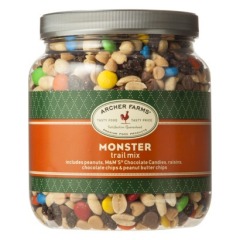
I’m pretty sure it’s called Monster Mix because you turn into a monster if anyone tries to take it away from you.
Anyways, here I’ve started making my own trail mixes with almonds, raisins, pretzels, and sometimes little candies that would be comparable to mini m&ms. Not as good as monster mix but at least I know exactly what I am putting into it. I never made my own trail mix at home.
H. Orange juice: Since fresh fruit is so cheap here, I have made my own OJ from scratch too many times to count. I have literally never done that in the United States.
2. Made me realize how horrible a lot of food in the US is
This part is FUN! Prepare yourself.
Disclaimer: This is NOT intended to be all “USA sucks we are horrible.” There are lot of the same foods here that we have in the states – frosted flakes, fruit loops, hard candies, chocolate bars, pre-made coffee drinks like cappuccinos, etc. They exist. But as you will see below, a lot of the comparable things between the 2 countries tend to be made with less “scary” ingredients here.
A. Frozen entrees:
USA: I picked Lean Cuisine “Spa Collection.” Why they have a line of frozen meals called the “Spa Collection” I will probably never know. But here we go. My other pressing question is I would be eating POTASSIUM CHLORIDE. I’m fairly sure we worked with good ‘ol K and Cl in high school chemistry.

COOKED WHITE MEAT CHICKEN (WHITE MEAT CHICKEN, WATER, MODIFIED TAPIOCA STARCH, CHICKEN FLAVOR (DRIED CHICKEN BROTH, CHICKEN POWDER, NATURAL FLAVOR), CARRAGEENAN, WHEY PROTEIN CONCENTRATE, SOYBEAN OIL, CORN SYRUP SOLIDS, SODIUM PHOSPHATE, SALT), BLANCHED WHOLE WHEAT VERMICELLI (WATER, WHOLE DURUM WHEAT FLOUR), BROCCOLI, WATER, YELLOW CARROTS, RED PEPPERS, EDAMAME SOYBEANS, BROWN SUGAR, 2% OR LESS OF SOY SAUCE (WATER, WHEAT, SOYBEANS, SALT), APPLE CIDER VINEGAR, MODIFIED CORNSTARCH, CHILI GARLIC SAUCE (SALTED CHILI PEPPERS (CHILI PEPPERS, SALT), GARLIC, SUGAR, RICE VINEGAR, WATER, MODIFIED CORNSTARCH, ACETIC ACID), SOYBEAN OIL, SUGAR, BROWN SUGAR SYRUP, SESAME SEEDS, DEHYDRATED SOY SAUCE (SOYBEANS, SALT, WHEAT), POTASSIUM CHLORIDE, GARLIC PUREE, CARAMEL COLOR, SEA SALT, SESAME OIL, YEAST EXTRACT, LACTIC ACID, SPICE, CALCIUM LACTATE.
Argentina: Ready frozen, microwavable entrees literally do not exist in any supermarket in Salta that I have been to… and I’ve been to all major chains. I picked the closest thing that exists, which is a bag of frozen vegetables and chicken to make stir fry.
B. Canned sauces
USA: America, you surprised me this round. You also made me forget how cheap US food products are in US supermarkets. I went with Prego Tomato Basil & Garlic. This costs about $3 in US grocery stores.

TOMATO PUREE (WATER, TOMATO PASTE), DICED TOMATOES IN TOMATO JUICE, SUGAR, CANOLA OIL, SALT, SPICE, DEHYDRATED GARLIC, CITRIC ACID, NATURAL FLAVORING.
Argentina: I went with Knorr Pomarola sauce with Basil to try to be somewhat comparable to Prego. The ingredients were listed nowhere on the website but I have it at my apartment (for those REALLY lazy days). Side note: Prego above costs 76 pesos at the grocery store… about $10. Not kidding. Wish I was.
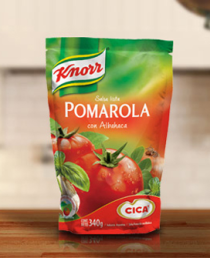
Tomato, modified starch, onion, salt, sugar, parsley, spices (oregano, tomillo, celery seed), citric acid, natural flavoring
C. Juices
USA: Minute Maid Premium Original Orange Juice. Good job, Minute Maid. I was pretty surprised by this one.
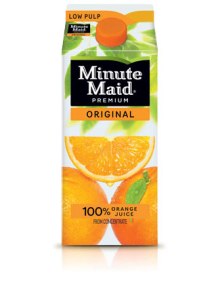
100% ORANGE JUICE FROM CONCENTRATE CONTAINS PURE FILTERED WATER, PREMIUM CONCENTRATED ORANGE JUICE, ORANGE PULP.
Argentina: Citric OJ. (Also comes in lemonade and grapefruit)
D. Crackers:
USA: Kashi Honey Sesame Crackers. Ironically, Kashi is supposed to be known as an “all natural” brand…. woah this is a long ingredient list. (I know these are honey sesame, I could’t find any regular sesame ones from a well-known brand with a quick google search)

Unbleached Wheat Flour , Kashi Seven Whole Grains & Sesame Flour (Whole: Oats, Hard Red Wheat, Rye, Brown Rice, Triticale, Barley, Buckwheat, Sesame Seeds), Cracked Grain Flour (Rye Meal, Wheat Bran, Stone Ground Whole Wheat Flour, Whole Oats, Barley , Yellow Corn Meal, Whole Millet, Brown Rice Flour), Evaporated Cane Juice Crystals, Whole Grain Wheat, Expeller Pressed Canola Oil, Honey, Toasted Sesame Seeds, Whey, Natural Leavenings (Potassium Bicarbonate, Sodium Acid Pyrophosphate, Monocalcium Phosphate), Sea Salt, Malt Extract, Honey Powder (Honey, Wheat Starch, Calcium Stearate, Soy Lecithin)
Argentina: Hogareñas Sésamo (Sesame crackers):
E. Cookies
USA: I picked Oreo Fudge Cremes because they’re kind of similar to Alfajores… but alfajores have dulce de leche in the middle and not oreo creme.

SUGAR, PALM AND/OR PALM KERNEL AND/OR CANOLA OIL, BLEACHED ENRICHED FLOUR (WHEAT FLOUR, NIACIN, REDUCED IRON, THIAMINE MONONITRATE [VITAMIN B1], RIBOFLAVIN [VITAMIN B2], FOLIC ACID), COCOA (NATURAL AND PROCESSED WITH ALKALI), DEXTROSE, CORNSTARCH, FRUCTOSE, SOY LECITHIN, LEAVENING (BAKING SODA AND/OR CALCIUM PHOSPHATE), SALT, VANILLIN – AN ARTIFICIAL FLAVOR, CHOCOLATE, MILK. CONTAINS: WHEAT, SOY, MILK.
Argentina: (These are still bad but not as bad as the US). Alfajores from the brand Jorgito.
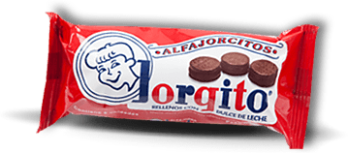
Dulce de leche (milk, sugar, glucose, perservative, flavoring), wheat flour, coating (basically liquidy chocolate), sugar, honey, whole milk, cocoa, salt, yeast, flavoring.
F. Restaurant portions
USA: Honestly this kind of goes without saying if you’ve been to the US, but our portions are REALLY big compared to what I generally see here. There are exceptions, of course. But just think about the size of dishes you get at Cheesecake Factory, Olive Garden, etc. That kind of stuff just does not exist here.
Argentina: There are some places with huge portions. This is from Chirimoya, a vegan and vegetarian restaurant in Salta that uses all fresh ingredients and is super socially-conscious as well. They have more or less the biggest portions I’ve seen here.
It’s obvious that Argentina isn’t like god’s gift to fresh and healthy food, but I still think it’s a step up above the USA.
3. Made me appreciate the availability of fresh fruits and vegetables all over the city
In case you have very limited Spanish, the yellow house is where I live. The green is a verdulería, or a little vegetable/fruit stand. Purple is a bakery. Blue is a supermarket. And maroon is the central market. This isn’t counting the dozens of guys who walk around my area with fruit/vegetable carts or park on a given corner or side of any street and sell things all day long. This map basically shows that within about 9 blocks of my apartment, I have access to 3 supermarkets, 3 fruit/vegetable stands, the central market, and a bakery. This isn’t counting all of the “kioskos” or convenience stores that stock things like fresh eggs, butter, milk, cheeses, dry goods, snacks, drinks, and alcohol, OR the “carnicerías” or “pollerías” that sell meat and/or chicken.
This is pretty self-explanatory. I am really lucky to live somewhere where I can walk and get any food I want more or less. That’s something else I should point out – I probably walk 2-3 miles a day here without even trying. This city is so accessible on foot and I really enjoy walking around, especially now that Spring has arrived. So… in conclusion, Salta is great, I think I’ve eaten less chemicals this year, and that’s awesome. The end!
Time.
My French friend Clémence once told me that most French people think that Ke$ha’s song goes “Tick tock, I’m a clock.”
This made me, of course, think back to all of the lyrics I misquoted as a child, and the many that I still probably misquote…. “Frosty the snowman… with a corn cob pipe and a butt and nose” being my personal favorite.
Anyways, more and more I’ve been honestly thinking about time. Tick tock, I’m a clock. I have 90 days left in Argentina.
90 days. Holy crap. That’s not much time at all. With every passing day I am reminded of the tick tock…
When I first got here on January 24th, I felt like my 11 months in Argentina would be an eternity. Now I look back, and I seriously wonder where the last 8 months went!
I remember getting here, spending a week in Buenos Aires, going to the plaza in Salta for the first time, moving into my apartment, and my first grad class. Everything in between that point and right now is an enormous blur.
Days spent in coffee shops, begrudgingly writing another long paper for my master’s. Afternoons in Portuguese class. Afternoons and evenings teaching English at Instituto Franklin. Afternoons in my Spanish class with Patricia, drinking mate. Weekend trips around NW Argentina. Occasional Skype calls with friends and family at home. Frustration to the point of tears with Argentinian bureaucracy. Thousands of empanadas. Folklore music and peñas. Afternoons working with some of the brightest Salta teenagers at their private high school. My huge trip to Bolivia and Perú is muddled somewhere in between all of that.
Where have the last 8 months gone!? Of all of the things that stick out in my mind, I have very few, if any, photographs of those things and places. My trips are well-documented. But my everyday life in Argentina is only documented in my mind.
I’m starting to panic about how little time I have left here. When this grand experience is gone, what will I have to remember it by? The random earrings with old Argentinian currency I bought from a tiny shop in an even tinier town? The salt llama statue I bought once at the salt flats? One of many llama sweaters? What does that stuff really mean to me, anyways?
My final graduate class, my Thesis Seminar, starts a week from today. I am almost done with all of my graduate coursework. All I have left is my thesis.
I want to study bilingual education in the Wichí community. But do you have any idea how hard it is to start this process of research, interviews, observations, conversations? It is so hard.
No es tan fácil simplemente entrar en una comunidad y esperar que se te abran los brazos.
“It’s not as easy as simply entering a community and hoping they open their arms to you.”
I’ve been emailing with someone who’s worked a lot in bilingual education, and that’s what he said to me today. Sigh. He’s right, and I know that. It’s just… how do I overcome that? Move beyond that?
At the beginning of October I’m just kind of planning to go up to the Wichí community (a HUGE area that starts about 6 hours NE of where I live and goes up, around, and over for 5-ish hours). It’s really, really hard to do anything from here.
I only have 3 months left to do some solid observations, form some good connections, and really get going on my thesis. I have my fingers crossed that my Fulbright grant works out so that I can come back and finish my thesis in 2014-2015. But if I don’t get it, I guess I will be leaving my thesis dreams behind and not end up with a master’s degree as a result of all this work. Sigh.
It’s really hard for me to have no idea what the future has in store. Only time will tell.

